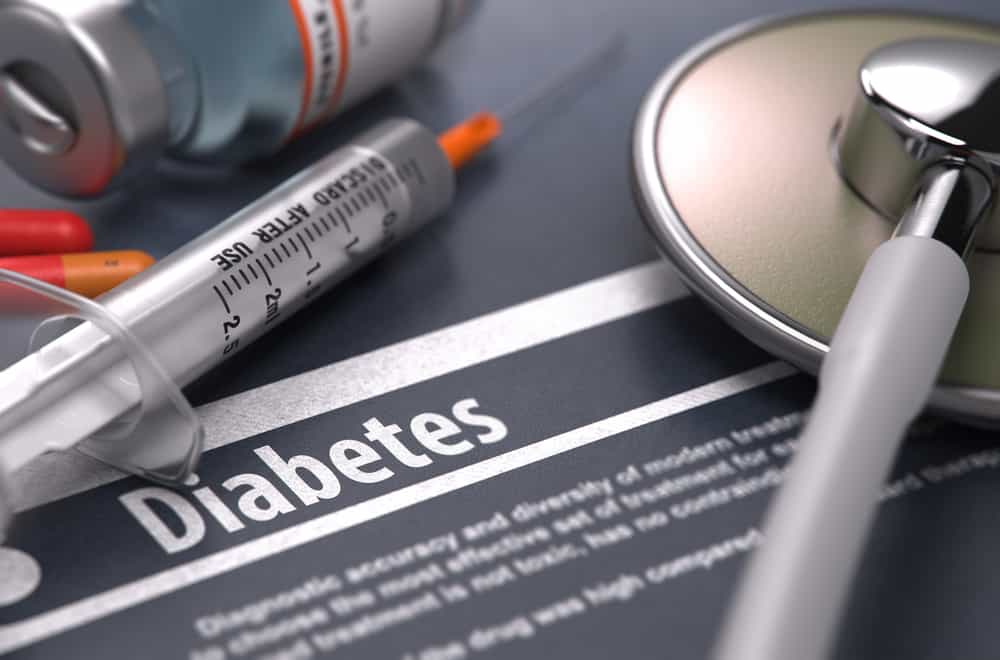Contents:
- Medical Video: Why is My Blood Sugar So High In The Morning
- What are the signs and symptoms of prediabetes?
- What causes normal blood sugar to increase (prediabetes)?
- How do doctors diagnose prediabetes?
- Tips to prevent normal blood sugar levels from rising
Medical Video: Why is My Blood Sugar So High In The Morning
Hey, when was the last time you checked blood sugar? If the last reading of your blood sugar levels is normal, it rises slightly but is not classified as diabetes, that doesn't mean you can relax, you know! You may be in the prediabetes phase.
In the medical world, your doctor may refer to prediabetes with the following terms:
- Glucose tolerance is impaired (TGT): This condition means you have higher blood sugar after meals than normal people.
- Interrupted sugar tolerance: This condition illustrates that your fasting blood sugar in the morning before eating is higher than normal people.
- Insulin resistance: This means that your body cannot use existing insulin effectively, and in the end it can cause accumulation of sugar in the blood.
What are the signs and symptoms of prediabetes?
There are no obvious symptoms of the condition of prediabetes. Some people may experience symptoms of insulin resistance, such as having polycystic ovary syndrome (PCOS) or acanthosis nigricans. Acanthosis nigricans is a disorder in which the skin becomes thick, dark, and has a velvety texture when touched. Complications of diabetes can usually occur at the elbows, knees, neck, armpits, and knuckles.
If you have had normal blood sugar readings which then slightly increase with suspicion of prediabetes, it is important that you contact your doctor immediately if you experience symptoms:
- Increased thirst
- Increased frequency of urination at night
- Fatigue
- Blurred vision
- Wounds that don't heal
All of the symptoms above are typical symptoms that are often found in people with type 2 diabetes, and can be a sign that your prediabetes has developed into diabetes. The doctor will do several checks to confirm your diagnosis.
What causes normal blood sugar to increase (prediabetes)?
The pancreas has a function to produce the hormone insulin, which will be released when you eat. Insulin helps so that the cells in the body can convert blood sugar into energy. Therefore, insulin can play a role in reducing blood sugar. In the case of prediabetes, cells in the body do not react strongly enough to insulin. This condition is called insulin resistance.
The causes of insulin resistance are still unclear today. According to the Mayo Clinic, prediabetes is most likely caused by lifestyle and genetic factors. In addition, people who are overweight or lazy to move are also at a higher risk for prediabetes.
How do doctors diagnose prediabetes?
There are several types of blood sugar checks that may be requested by a doctor, such as:
- Examination of hemoglobin A1c (HbA1c): Aim to measure your average blood sugar for about two to three months. This examination does not require fasting first and can be done at any time. Values between 5.7-6.4% can be considered prediabetes. Re-examination may be needed to confirm the results. The higher your HbA1c level, the higher your risk of prediabetes develops into type 2 diabetes.
- Examination of fasting blood sugar: Fasting for approximately eight hours is required for this examination. Results between 100-125 mg / dL indicate you have prediabetes.
- Examination of the oral glucose tolerance test (OGTT): Fasting is also needed to do this examination. The medical officer will check your blood twice. The first is when you come to the laboratory after fasting, and the second is after 2 hours you drink the sugar solution provided by the officer. If your blood sugar ranges from 140-199 mg / dL after two hours, you can be said to have prediabetes.
- Examination of blood sugar when (GDS): This examination can be done at any time without the need for fasting. Results between 140-199 mg / dL indicate prediabetes. If you do not experience typical symptoms, the doctor will retest to confirm the diagnosis.
If your test results show normal blood sugar results, you can repeat it after three years. However, if you are diagnosed with prediabetes, your doctor may re-check your blood sugar after 12 months or less.
Tips to prevent normal blood sugar levels from rising
Treating prediabetes can also be considered an attempt to prevent you from developing type 2 diabetes. Usually doctors will encourage you to change your lifestyle. Some of the efforts that you can do include:
- Eating high-fiber foods
- Regular exercise
- Reducing weight
- Take diabetes medications that the doctor gives regularly
According to one study, 5-7% weight loss can reduce the risk of diabetes. The participants who took part in the study underwent a low-fat, low-calorie diet, and exercised for 30 minutes five times a week.












